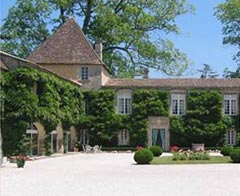
Le Château Carbonnieux est l’une des plus anciennes propriétés du vignoble bordelais. Ses terres sont cultivées sans discontinuer au moins depuis le XIIIe siècle. Le château, imposante demeure, a été créé au
XIVe siècle. Il aurait possédé jusqu’à douze tours de défense. Premiers propriétaires et fins viticulteurs, les moines bénédictins de l’abbaye Sainte-Croix de Bordeaux ont su donner très tôt aux vins blancs et rouges une réputation internationale. Ils réussirent même à introduire leurs vins blancs, limpides et peu colorés, dans le palais du sultan de Constantinople, en les dénommant « eau minérale de Carbonnieux », contournant ainsi la loi coranique...
Carbonnieux appartient depuis plus d’un demi-siècle à la famille Perrin, viticulteurs de père en fils depuis le début du XIXe siècle. Situé sur un point haut de la commune de Léognan, parfaitement drainé par un cours d’eau naturel nommé l’Eau blanche, le terroir de
Carbonnieux est particulièrement propice à l’obtention de vins blancs et rouges de très grande qualité.
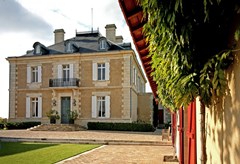
Situé aux portes de Bordeaux, au cœur de l’appellation Pessac-Léognan et sur la terre des prestigieux Crus Classés de Graves, le Château Haut-Bailly domine, depuis plus de quatre siècles, un vignoble de 30 hectares d’un seul tenant.
D’une recherche permanente de qualité résultent limitation des volumes, sélections sévères et modernisation constante des équipements. Conformément à la tradition, les vignes sont labourées, cultivées sans désherbant et vendangées à la main. Des cuviers thermorégulés permettent une vinification parcellaire pendant les trois semaines de cuvaison qui se poursuivra par un élevage de 16 mois en barriques.
Le style des vins de Haut-Bailly résulte d’une harmonie subtile mariant finesse et concentration, souplesse et structure, douceur des tannins et richesse aromatique : la pureté de l’élégance.
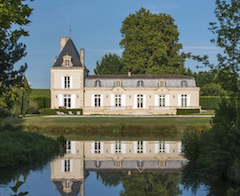
Tout proche de Bordeaux au cœur d'un magnifique parc arboré, le Château Larrivet Haut-Brion possède aujourd'hui l'un des plus vastes vignobles de l'appellation Pessac-Léognan (72 hectares au total).
La famille Gervoson, propriétaire depuis 1987, vous ouvre les portes de cette propriété qui, outre son château de style classique, comprend un parc de 13 hectares avec un étang. A seulement 20 minutes de Bordeaux et 30 minutes du Bassin d’Arcachon, le Château Larrivet Haut-Brion est l’un des châteaux les plus innovants de l’appellation Pessac-Léognan.
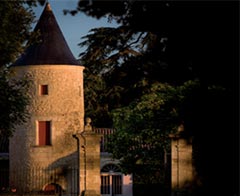
Cru Classé de Graves dès 1953, le Château Latour-Martillac doit son nom à la tour ornant sa cour d'honneur, vestige d'un fortin bâti à Martillac au XIIe siècle par les ancêtres du célèbre philosophe vigneron Montesquieu.
Situé sur une exceptionnelle croupe de graves pyrénéennes, ce domaine attira l'attention d'Édouard Kressmann, négociant à Bordeaux depuis 1871, en particulier pour la qualité de ses vins blancs. Son fils aîné, Alfred, acheta le domaine en 1930, et développa le vignoble rouge, et avec son fils, Jean, dessina l'étiquette actuelle, barrée d'or et de sable, qui orne les bouteilles depuis 1934.
Aujourd'hui, Tristan et Loïc Kressmann, les deux derniers fils de Jean Kressmann, aidés des meilleurs consultants œnologues du Bordelais, poursuivent la tradition familiale pour obtenir la quintessence de cet authentique terroir de graves.
Par leur structure élégante et leur harmonie, les vins rouges de Latour-Martillac, ainsi que les blancs, également classés, sont reconnus comme des valeurs sûres de l'appellation Pessac-Léognan.
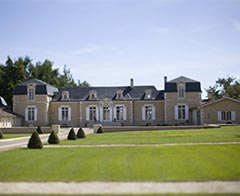
Rouillac appartenait au Baron Haussman au XIXème siècle qui réalisa de grands travaux.
L'actuel propriétaire Laurent Cisneros est passionné de chevaux et d'équitation. Outre la visite du domaine viticole, vous pourrez ainsi vous promenez dans les écuries.
Le Château de Rouillac, magnifique bâtisse du XIXe siècle, appartenait au Baron Haussmann qui a engagé de grands travaux pour produire un vin délicieux dont Napoléon III raffole !
Il associe les chevaux à l'histoire de la propriété en édifiant de très belles écuries. Au fil du temps, le domaine a su cultiver ses souvenirs et son exceptionnel terroir de Graves.
Laurent Cisneros et sa famille sont heureux de tenir désormais les rênes de cette superbe propriété et de son cru d'excellence.
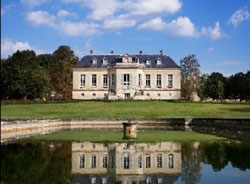
Le château est classé au monument historique depuis 1951.
Riche de sept siècles d'histoire, le Château La Louvière est situé à quatorze kilomètres au sud de Bordeaux, au coeur de l'appellation Pessac-Léognan. En 1310, déjà, la vigne était cultivée sur ce terroir.
Mais c'est au début du XVIe siècle que naît le vignoble moderne, sous l'impulsion de parlementaires bordelais. En 1620, les chartreux en héritent et vont apporter tout leur savoir-faire en matière de vinification, permettant ainsi aux vins d'acquérir une renommée internationale. À la Révolution, Jean-Baptiste Mareilhac, riche négociant, l'acquiert et fait élever le château actuel dans le plus pur style néo-classique, aujourd'hui classé Monument historique. En 1965, André Lurton en devient propriétaire et s'emploie depuis, à lui redonner toute sa splendeur d'antan.
Une parfaite connaissance des sols, des pratiques culturales respectueuses de l'environnement, des méthodes traditionnelles de vinification, associées à des techniques toujours plus innovantes, permettent à La Louvière de produire des vins rouges et blancs secs d'une grande personnalité.


